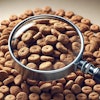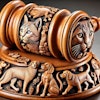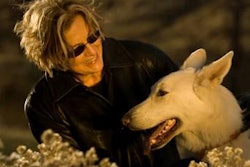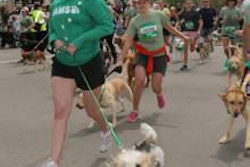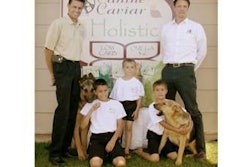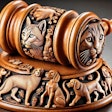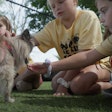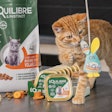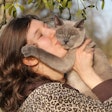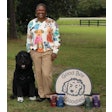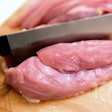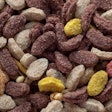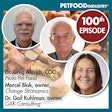Last week’s Interzoo, the 33rd edition of the largest pet trade show in the world, saw not only increased numbers from the last edition in 2012 but also hundreds of new petfood products. Grain free petfoods were ubiquitous, and BARF (biologically appropriate raw foods) and similar fresh-meat products abounded, too.
And, while one product does not a trend make, probably the most noteworthy and unique new petfood product was a dog food with a “100% insect protein base,” according to the manufacturer, Jonker Petfood of the Netherlands, a private label supplier. Though other products using insects have been created for pets such as reptiles and birds, this is the first I know of for dogs. Perhaps Jonker has been reading recent research on the viability of insect protein (for humans and animals) and decided to lead the pack, so to speak, in using alternative sources of protein as both the human food and petfood industries face supply issues. A company representative at the stand told me the idea was to put the dog food on the market and gauge the interest and reaction among petfood marketers.
At Interzoo 2012, an acquaintance from the US petfood industry noted that the grain free trend becoming so popular among US pet owners then had “jumped the Atlantic,” with new grain free petfoods popping up here and there at the international trade show. At this year's Interzoo, it was abundantly clear that grain free is now just as big a trend in Europe as in the US. In fact, the founder of a new line of superpremium foods – Christian Degner-Elsner of Essential Foods – said that, although all the products in his line are grain free, the packaging doesn’t even say so because “it's become standard and almost expected for these high-end types of petfoods.”
While not new, the BARF concept seems to be enjoying a resurgence, at least among German petfood companies, many of which featured it prominently among their new products. One, Dr. Clauder’s, had chefs giving demonstrations at its stand showing how to make BARF foods and incorporate its line into a dog's diet. Many of these companies pushing the BARF concept used marketing messages that have become so prevalent for these products as well as ones with high meat levels and/or no grains: “back to nature, as a dog would eat in the wild, feed the wolf in your dog,” etc.
Yet one company took the opposite approach. The stand for Allco, another German company, featured its brand Christopherus and large signs with messages such as "Why dogs are not wolves (any more)" and others explaining that dogs need a balance of nutrients to be healthy. A representative said the company thought it was important to promote its philosophy that dogs have evolved from wolves and today's dogs have different nutritional needs, especially as they are often more sedentary than in the past; he added that Allco considered it a responsibility to educate dog owners on those needs and to try to address the pet obesity issue.
Though I tend to agree more with the Allco philosophy – which is backed up by much more research than is the concept that dogs are carnivores who need high meat levels and should not eat grains – that is definitely the minority position on the market right now, and Interzoo followed suit. Other examples included GA Pet Food Partners’ new Freshtrusion process allowing for ever higher levels of fresh meat to be incorporated into dry petfoods. Besides using Wenger’s twin screw extruder engineered specifically for high meat inclusion, GA is also putting the meat through a centrifuge first in its “meat kitchen” to separate out most of the water and oil, leaving only the protein itself, the company says. This process also creates a high-quality oil that GA can then incorporate into other products or sell back to the market.
Other petfood trends of note at Interzoo:
- Some Italian petfood companies, such as Effeffe and Monge, were offering brand specific measuring/dispensing cups, showing owners how much of each product in the line to feed. Great idea, in my opinion, and they managed to fit a lot of products on that one cup.
- Market research has shown for some time now that Eastern Europe is one of the fastest growing petfood markets, and that was obvious at Interzoo – not only from the number of stands for companies from countries like Lithuania, Ukraine and Poland, but I also heard from several people that the Czech Republic is really “heating up” in terms of overall growth as well as increasing interest from distributors and pet owners in premium brands. Poland received several mentions, too.
- On the ingredient side, salmon meal and oil showed up in a lot of new products. I learned about a fairly new (18 months old) Global Salmon Initiative, a standards – and, eventually, certification – program similar to the Marine Stewardship Council.
- Ingredients supplier and support company BHJ A/S, based in Denmark but serving petfood manufacturing clients throughout Europe and North America, had a prominent digital sign in its stand displaying, and counting up in real time, the volume in tons of ingredients produced in its 20 factories since January 2014.
Finally, my favorite name for a new product wasn’t related to petfood, but it’s just too clever not to share: Poopoopeedo, a type of pod to serve as a place to hide away the litter box or as a cat nesting place.

